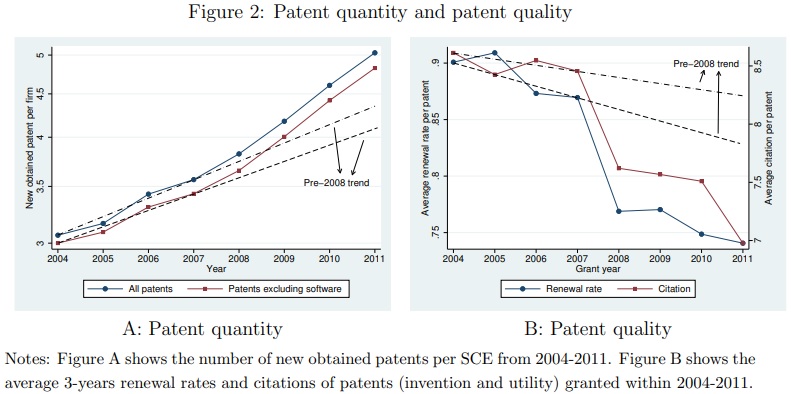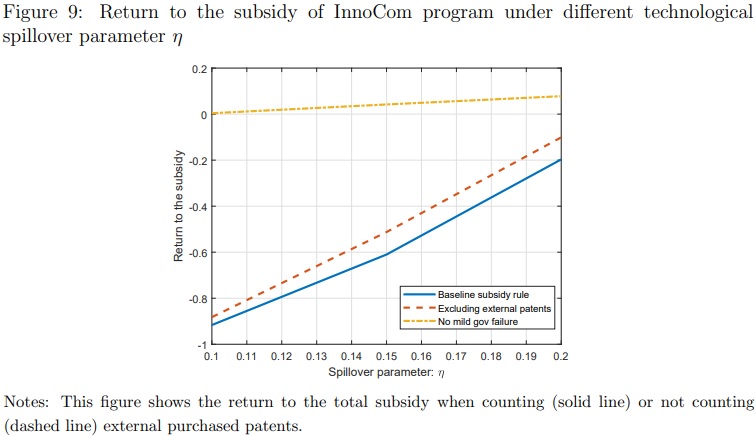"And now we have even more evidence thanks to a new National Bureau of Economic Research study by
"In this paper, we study the consequence of a relatively mild form of government failure – bureaucrats simply being average and not omniscient – on the success or failure of an industrial policy. For example, when a firm applying for a subsidy presents a set of recent patents as proof of its innovation ability to a government committee that reviews the application, the bureaucrats in the committee can count the patents but may not be able to differentiate their quality.…We study these questions in the context of China’s largest pro-innovation industrial policy. The program is known as InnoCom and offers a large subsidy – a 10 percentage points reduction in the corporate income tax rate to successful applicant firms. A major policy change in 2008 expanded the scale of the program greatly… the 2008 policy shock has induced the initially less innovative firms – those with fewer than six patents – in the targeted industries to rush to achieve the desired level of patents for subsidy applications. In addition, a rising share of the new patents owned by them appears to be of low quality. …we study how the patent trade has changed following the 2008 policy shock. In particular, the share of patents sold to initially less innovative firms in the targeted industries exhibits the fastest growth after 2008. This is especially true for patents sold by either the firms outside the targeted industries, which are not eligible for a subsidy anyway, or by the firms in the targeted industries that already had more than six patents before the policy shock and hence do not need more to compete for a subsidy."What did they find?
As shown in Figure 2, firms responded by having more patents, but those patents had much less value.
Indeed, 98 percent of the patents were low quality.
Even more important, the overall program has destroyed wealth, as measured by a negative net social return.
"After calibrating the model to the data, we find that although the subsidy leads to an increase in the patent count by 33%, 98% of the increase is of low quality. This implies a notable decline in the average quality of the new patents. …By comparing the welfare levels in the model with and without the subsidy program, we estimate the net social return to the subsidy to be -19.7%. That is, the society would be better off without this subsidy program. …the thought experiment serves to confirm that the presence of even a mild government failure could convert an…industrial policy from success to failure."
Here’s another visual, this one showing negative rates of return regardless of assumptions of technological spillovers.
One final point that’s worth sharing.
The authors note that industrial policy also causes damage because taxes produce deadweight loss.
…because public funding is financed through distortionary taxation, it costs the society more than 1 RMB to fund 1 RMB worth of subsidy.
Some fans of industrial policy claim that China is an example of successful industrial policy, but that’s nonsense. Total nonsense. Utter nonsense. Unless there are sweeping pro-market reforms, China will continue to lag way behind the United States."


No comments:
Post a Comment
Note: Only a member of this blog may post a comment.